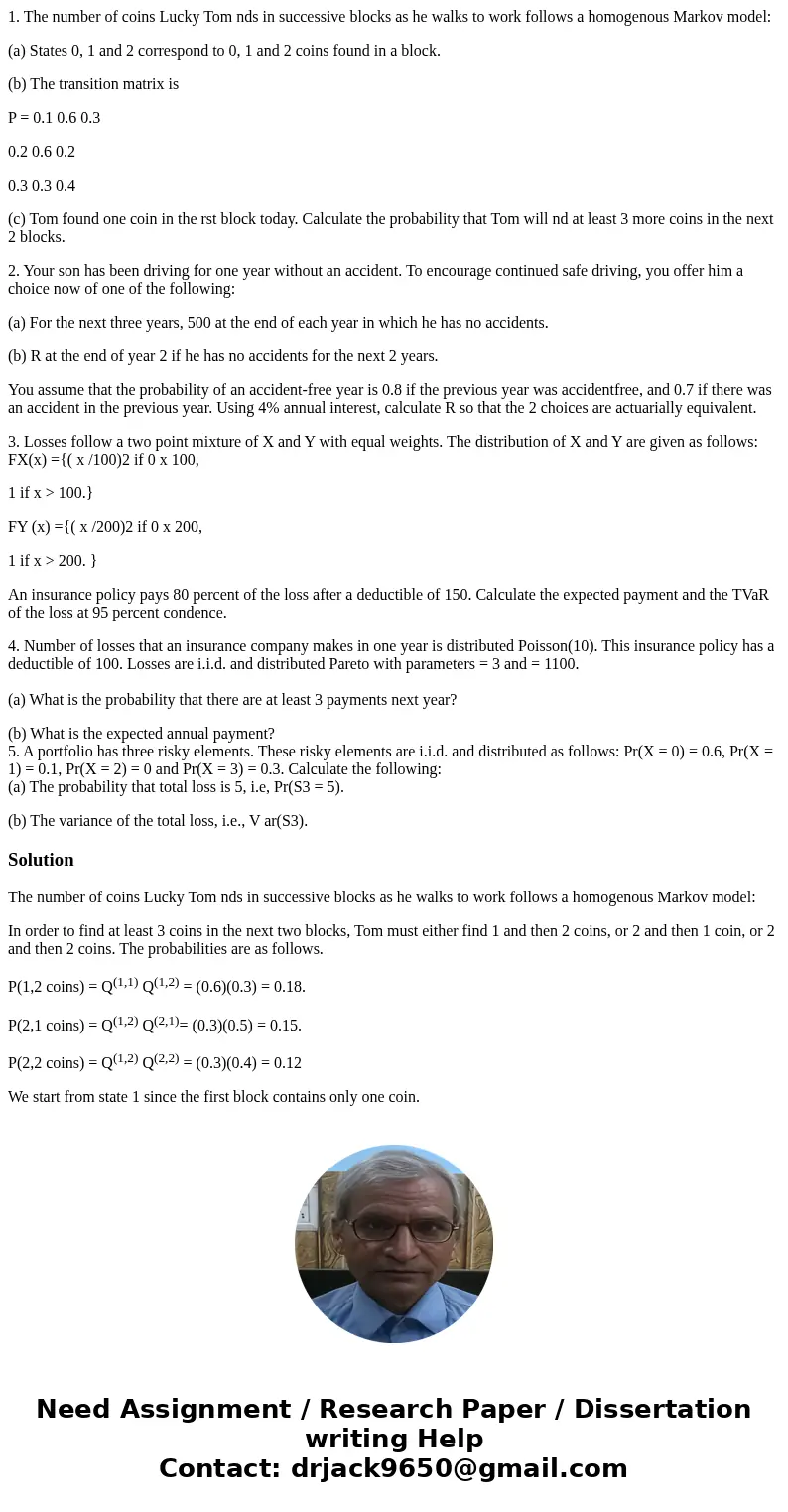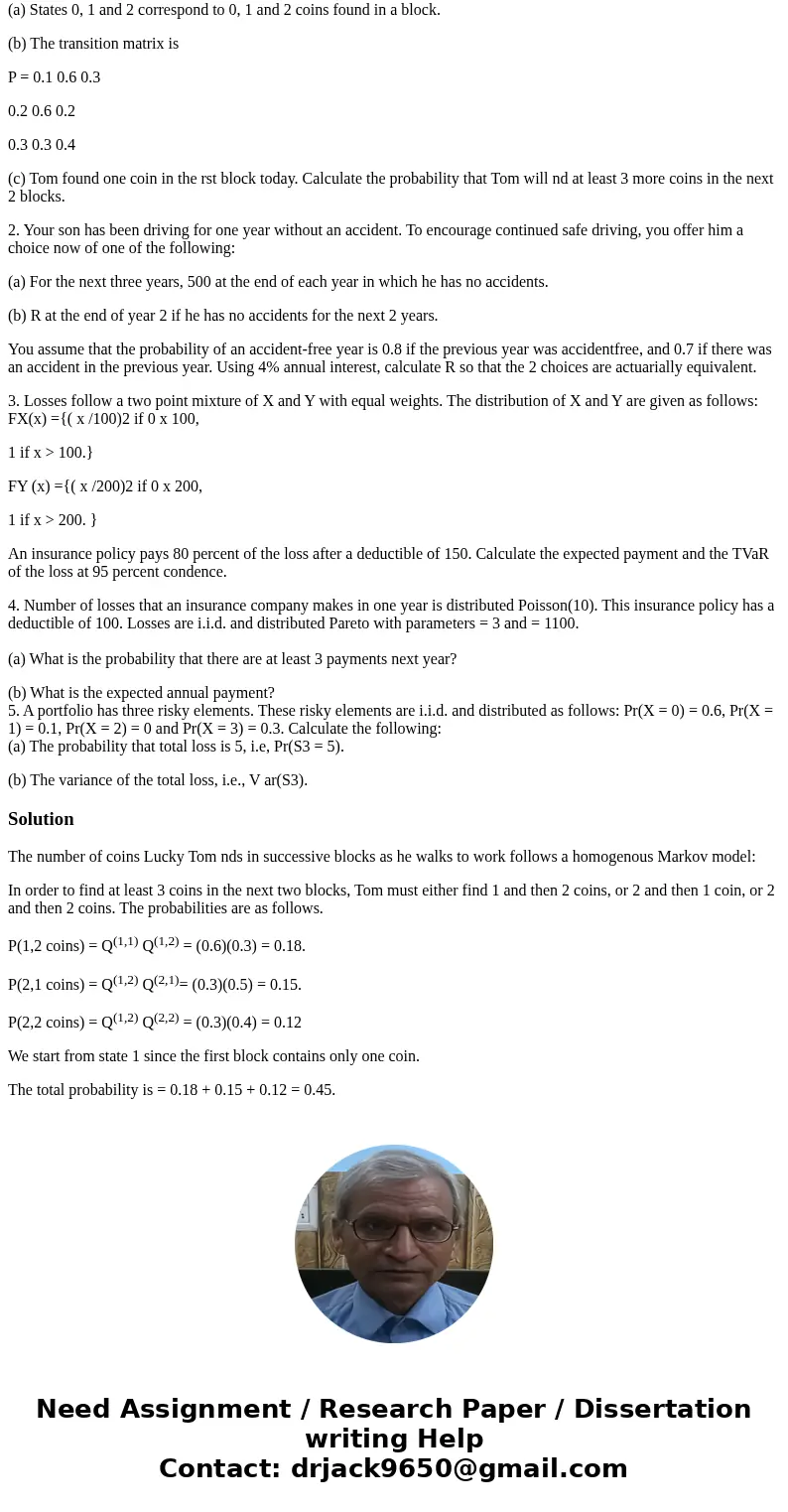1 The number of coins Lucky Tom nds in successive blocks as
1. The number of coins Lucky Tom nds in successive blocks as he walks to work follows a homogenous Markov model:
(a) States 0, 1 and 2 correspond to 0, 1 and 2 coins found in a block.
(b) The transition matrix is
P = 0.1 0.6 0.3
0.2 0.6 0.2
0.3 0.3 0.4
(c) Tom found one coin in the rst block today. Calculate the probability that Tom will nd at least 3 more coins in the next 2 blocks.
2. Your son has been driving for one year without an accident. To encourage continued safe driving, you offer him a choice now of one of the following:
(a) For the next three years, 500 at the end of each year in which he has no accidents.
(b) R at the end of year 2 if he has no accidents for the next 2 years.
You assume that the probability of an accident-free year is 0.8 if the previous year was accidentfree, and 0.7 if there was an accident in the previous year. Using 4% annual interest, calculate R so that the 2 choices are actuarially equivalent.
3. Losses follow a two point mixture of X and Y with equal weights. The distribution of X and Y are given as follows: FX(x) ={( x /100)2 if 0 x 100,
1 if x > 100.}
FY (x) ={( x /200)2 if 0 x 200,
1 if x > 200. }
An insurance policy pays 80 percent of the loss after a deductible of 150. Calculate the expected payment and the TVaR of the loss at 95 percent condence.
4. Number of losses that an insurance company makes in one year is distributed Poisson(10). This insurance policy has a deductible of 100. Losses are i.i.d. and distributed Pareto with parameters = 3 and = 1100.
(a) What is the probability that there are at least 3 payments next year?
(b) What is the expected annual payment?
5. A portfolio has three risky elements. These risky elements are i.i.d. and distributed as follows: Pr(X = 0) = 0.6, Pr(X = 1) = 0.1, Pr(X = 2) = 0 and Pr(X = 3) = 0.3. Calculate the following:
(a) The probability that total loss is 5, i.e, Pr(S3 = 5).
(b) The variance of the total loss, i.e., V ar(S3).
Solution
The number of coins Lucky Tom nds in successive blocks as he walks to work follows a homogenous Markov model:
In order to find at least 3 coins in the next two blocks, Tom must either find 1 and then 2 coins, or 2 and then 1 coin, or 2 and then 2 coins. The probabilities are as follows.
P(1,2 coins) = Q(1,1) Q(1,2) = (0.6)(0.3) = 0.18.
P(2,1 coins) = Q(1,2) Q(2,1)= (0.3)(0.5) = 0.15.
P(2,2 coins) = Q(1,2) Q(2,2) = (0.3)(0.4) = 0.12
We start from state 1 since the first block contains only one coin.
The total probability is = 0.18 + 0.15 + 0.12 = 0.45.


 Homework Sourse
Homework Sourse